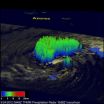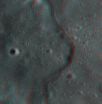(Press-News.org) GAINESVILLE, Fla. — University of Florida researchers studying river turtles in Missouri found populations of the northern map turtle have not recovered from harvesting in the 1970s.
Scientists used data collected by Florida Museum of Natural History herpetology curator Max Nickerson in 1969 and 1980 as a baseline, then surveyed the same stretch of river in the Ozarks in 2004 to determine the northern map turtles had not recovered from a previous 50 percent population loss caused by harvesting, likely for food. River turtles help ecosystems function by cycling nutrients and maintaining food web dynamics. Assessment of the northern map turtle, a protected species in some states, is essential as increasing human populations and global warming further alter its habitat. The study was published Sept. 14 in Volume 3 of Copeia, and is scheduled to appear online this week.
"The importance of river turtles is really underplayed," said lead author Amber Pitt, a Clemson University postdoctoral research fellow who conducted research for the study as a UF graduate student. "River turtles are long-lived, rely on the same water resources that we do and can serve as indicators of water quality. People should be concerned if turtles are impacted by poor water quality because we are likely being affected, too."
Inhabiting river systems from southern Arkansas to Quebec, the northern map turtle, Graptemys geographica, is among the most wide-ranging map turtles in the U.S. They are dietary specialists and depend mainly on snails, making the species especially susceptible to biodegradation. Formally known as the common map turtle due to its wide geographic distribution, its name was changed in 2000 so people would not assume it was abundant, Pitt said. The northern map turtle is listed in Appendix III of the Convention on International Trade in Endangered Species of Wild Fauna and Flora and this research may be used as a guideline for conservation or protection of other turtle species.
Scientists determined harvesting was likely the cause of the 50 percent population loss between 1969 and 1980 based on analysis of data published by Nickerson and Pitt in the Florida Museum of Natural History Bulletin in August. Data showed fewer adult females, which are larger than males and preferred for the food trade, and local residents confirmed turtle harvesting occurred in the river, Nickerson said.
"This shows that harvesting, even if it's a one-time event, can cause a turtle population to significantly decline and remain impacted for decades, because this species doesn't reproduce quickly," Pitt said. "It was really discouraging to see that even without the pressure of further harvesting, they couldn't recover over that long time period, which is partially due to their biology but may also be associated with habitat degradation and disturbance."
Researchers used similar methods to survey the nearly 3-mile stretch of the North Fork of White River in Ozark County, Missouri, in 2004 by snorkeling to locate, tag and record information about the turtles. Based on the 2004 examination of the river, habitat degradation was apparent because of increased siltation, sedimentation and algal blooms.
"What's happening in these big spring-fed rivers is very important," Nickerson said. "When you clear the banks of a river, you increase siltation, which affects the food sources, reproduction, plant growth, species composition and basic ecology of that section of the stream, and perhaps the entire river."
River degradation has been partially caused by human recreation, which drastically increased by 2004, Nickerson said. People swimming and boating also frighten turtles so they may not bask as much as needed to maintain their health and maximize egg production.
Although scientists generally agree many turtle populations are declining worldwide, little has been published on river turtle communities, said Don Moll, a professor emeritus at Missouri State University who co-authored a textbook on freshwater turtles.
"This is a very important study because it follows the dynamics of this turtle community over a more than 30-year time period, and really it's the only published river turtle study I can think of that does that," Moll said. "It's a real contribution in that sense — it's so unique."
One concern with attracting conservation efforts to river turtles may have to do with their small size because they do not garner as much public attention as larger marine species, Pitt said. Adult female northern map turtles are about 11 inches long.
"Often times with conservation, you have the charismatic mega fauna that people care about, such as sea turtles — everybody cares about sea turtles, including me," Pitt said. "But river turtles are facing just as many threats as sea turtles. People are also harvesting river turtles and there are very few laws in place to stop this harvest — it's a global epidemic that is causing turtle populations to be wiped out."
###
Credits
Writer
Danielle Torrent, dtorrent@flmnh.ufl.edu
Source
Max Nickerson, maxn@flmnh.ufl.edu, 352-273-1946
New UF study shows river turtle species still suffers from past harvesting
2012-09-26
ELSE PRESS RELEASES FROM THIS DATE:
NYU biologists uncover dynamic between biological clock and neuronal activity
2012-09-26
Biologists at New York University have uncovered one way that biological clocks control neuronal activity — a discovery that sheds new light on sleep-wake cycles and offers potential new directions for research into therapies to address sleep disorders and jetlag.
"The findings answer a significant question — how biological clocks drive the activity of clock neurons, which, in turn, regulate behavioral rhythms," explained Justin Blau, an associate professor in NYU's Department of Biology and the study's senior author.
Their findings appear in the Journal of Biological ...
Cryopreservation of induced pluripotent stem cells improved the most by one product
2012-09-26
Tampa, Fla. (Sep. 25, 2012) – In a study to determine the best cryopreservation (freezing) solution to maintain induced pluripotent stem (iPS) cells, a team of researchers from Japan compared 12 kinds of commercially prepared and readily available cryopreservation solutions and found that "Cell Banker 3" out-performed the other 11 solutions by allowing iPS cells to be preserved for a year at degrees C in an undifferentiated state.
The study is published in a recent special issue of Cell Medicine [3(1)], now freely available on-line at: http://www.ingentaconnect.com/content/cog/cm.
"iPS ...
Cutting-edge technology makes NASA's hurricane mission a reality
2012-09-26
Cutting-edge NASA technology has made this year's NASA Hurricane mission a reality. NASA and other scientists are currently flying a suite of state-of-the-art, autonomously operated instruments that are gathering difficult-to-obtain measurements of wind speeds, precipitation, and cloud structures in and around tropical storms.
"Making these measurements possible is the platform on which the instruments are flying," said Paul Newman, the deputy principal investigator of NASA's Hurricane and Severe Storm Sentinel (HS3), managed by NASA's Goddard Space Flight Center in Greenbelt, ...
October LITHOSPHERE delivered online
2012-09-26
Boulder, Colo., USA – The October issue of Lithosphere covers geology in Wyoming, USA; the California Coast Ranges, USA; the Alpine Fault, New Zealand; the South Atlantic seafloor; the central Himalaya in Nepal; and Sidekan, Kurdistan Region, Iraqi Zagros suture zone. Topics and methods include tectonics, orogeny, hazards, paleogeography, trigonometrics, multiple-point data analysis, LiDAR, oceanic isostasy, computer modeling, and spectroscopy.
Abstracts are online at http://lithosphere.gsapubs.org/content/current. Representatives of the media may obtain complimentary ...
NASA satellites see Tropical Storm Nadine 'refuse to go away'
2012-09-26
Nearly two weeks after becoming a tropical storm in the central Atlantic back on September 11th, NASA satellites confirm that Nadine is still spinning away south of the Azores as a minimal tropical storm. One of those satellites called TRMM has been providing forecasters with rainfall rates and cloud heights.
Nadine initially formed into a tropical depression from an African easterly wave that had propagated westward out into the central Atlantic from the coast of Africa. Nadine initially moved northwestward then northward before getting caught up in the westerlies over ...
Mouse pancreatic stem cells successfully differentiate into insulin producing cells
2012-09-26
Tampa, Fla. (Sep. 25, 2012) – In a study to investigate how transplanted islet cells can differentiate and mature into insulin-producing pancreatic cells, a team of Japanese researchers found that using a specific set of transcription factors (proteins that bind to specific DNA sequences) could be transduced into mouse pancreatic stem cells (mPSCs) using Sendai virus (SeV), a mouse influenza virus, as a carrier, or vector.
The study is published in a recent issue of Cell Medicine [3(1)], now freely available on-line at: http://www.ingentaconnect.com/content/cog/cm.
"Diabetes ...
NASA infrared data compares Super Typhoon Jelawat with Tropical Storm Ewiniar
2012-09-26
NASA's Aqua satellite has been obtaining infrared, visible and other data everytime it passes over Typhoon Jelawat and Tropical Storm Ewiniar in the western North Pacific, and a combination of two images from Aqua's AIRS satellite puts the storms in perspective.
A combined image created from infrared data obtained by the Atmospheric Infrared Sounder (AIRS) instrument that flies on NASA's Aqua satellite provides a comparison of the two monster storms in the western North Pacific Ocean basin . An infrared image of Typhoon Jelawat captured on Sept. 25 was combined with an ...
Category 2 Hurricane Miriam Seen in East Pacific by NASA satellite
2012-09-26
The MODIS instrument that flies aboard NASA's Aqua and Terra satellites provide some of the most clear and stunning imagery of tropical cyclones, and captured a visible image of Category 2 hurricane Miriam off the western coast of Mexico.
MODIS stands for the Moderate Resolution Imaging Spectroradiometer. Terra's MODIS and Aqua's MODIS view the entire Earth's surface every 1 to 2 days, acquiring data in 36 spectral bands, or groups of wavelengths. NASA's Aqua satellite flew over Hurricane Miriam on Sept. 24 at 21:00 UTC and the MODIS instrument captured a visible image ...
Hubble goes to the eXtreme to assemble farthest-ever view of the universe
2012-09-26
Like photographers assembling a portfolio of best shots, astronomers have assembled a new, improved portrait of mankind's deepest-ever view of the universe.
Called the eXtreme Deep Field, or XDF, the photo was assembled by combining 10 years of NASA Hubble Space Telescope photographs taken of a patch of sky at the center of the original Hubble Ultra Deep Field. The XDF is a small fraction of the angular diameter of the full moon.
The Hubble Ultra Deep Field is an image of a small area of space in the constellation Fornax, created using Hubble Space Telescope data from ...
Lunar Reconnaissance Orbiter explores the Moon in 3-D
2012-09-26
Scientists using the camera aboard NASA's Lunar Reconnaissance Orbiter are acquiring stereo images of the moon in high resolution (0.5 to 2 meters/pixel) that provide 3-D views of the surface from which high resolution topographic maps are made. The Lunar Reconnaissance Orbiter Camera Narrow Angle Camera (LROC NAC) team from the University of Arizona and Arizona State University are currently developing a processing system to automatically generate anaglyphs from most of these stereo pairs. An anaglyph is an image that can be viewed in 3-D using red-blue/green glasses.
LROC ...




